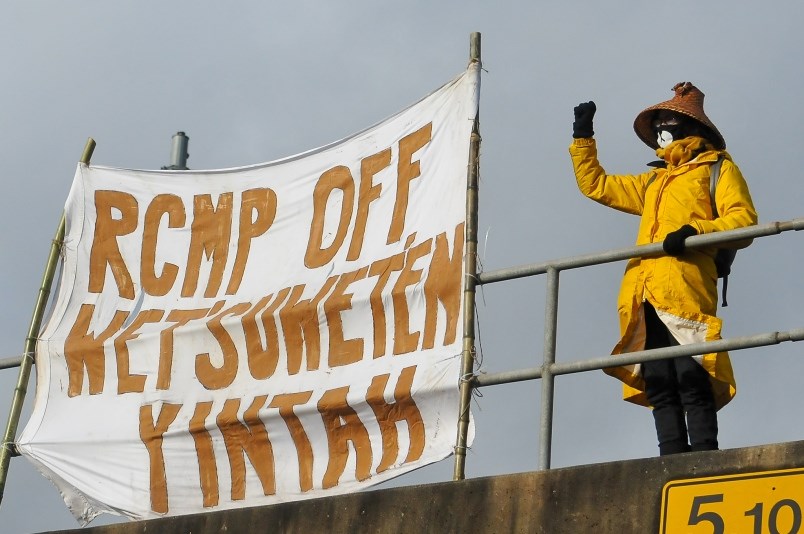It is fast becoming apparent that the protest that began over a natural gas pipeline in northwest B.C. has turned into something much, much bigger.
And ironically it now threatens to harm what this protest was supposed to be about from the beginning: Indigenous rights and self-interest.
The protest has now spread well beyond B.C.’s borders and has taken on a national scope. Railways – which built this country – are being blockaded, thus stopping the flow of many goods and threatening the economy of the entire country.
However, the protest has also become a catch basin for various assorted “causes” and perceived wrongs. At the protest that blockaded the B.C. legislature last week, I heard protesters denounce everything from colonialism to pipelines to fossil fuels to capitalism in general.
Lost in this swelling chorus is the fact that so many of B.C.’s 204 First Nations actually support many of the things now being condemned.
The Coastal Gaslink pipeline that was originally at the heart of this protest has the support of 20 First Nations along the pipeline route, including that of the Wet’suwet’en, although that Nation is clearly divided.
The Federal Court of Appeal’s recent decision that gave the green light for the Trans Mountain pipeline expansion to go ahead noted that 120 of 129 First Nations along that pipeline’s route either support the project or at least do not oppose it.
At least two consortiums of First Nations are actually trying to buy the TMX pipeline in order to allow their members to share in any economic prosperity that may come from ownership.
And First Nations’ leaders are starting to speak up, to provide a counter-narrative to the one perpetuated by environmental activists.
Wet’suwet’en member Candice George is rising in prominence as she gives speeches and numerous media interviews to back the pipeline project. She also sends tweets, such as this recent one:
“Canadians want to help indigenous people…Stop allowing US environmental organizations keep Indigenous peoples below the poverty line. Allow our people to make decisions for ourselves and please stop with the blockades across Canada! It’s only causing more division!”
Haisla First Nations Chief Councillor Crystal Smith, who backs the project, says that position is not a “sellout.”
“Investing in ourselves is not selling out, investing in our northern First Nations communities is not selling out, investing in our northern First Nations communities to reconcile our differences because of this project is not selling out,” she has said.
However, the attempts by many First Nations to take advantage of opportunities that may rescue their members from what are, in many instances, situations of grinding poverty may now be thwarted by a protest that seems to have been taken over by the well-organized environmental protest movement.
In no way are any of these developments particularly surprising. There has long been schisms among B.C.’s 204 First Nations, and it has been obvious for some time now that the environmental protest community has exploited that reality by hiving off some of those nations into their camp as pivotal for advancing their cause.
This protest is taking this country into brand new territory and who knows how it will end, or indeed, if it ever will actually “end.”
Inevitably, unless the hereditary chiefs change their position, this protest will merge – likely this summer – with the simmering protest against the TMX pipeline. Many, many people will be arrested for civil disobedience in the coming months.
Political protests have a greater chance of eventual success if they can combine several causes under the same umbrella. That is exactly what seems to be happening, which may prove unnerving to both federal and provincial governments across the country.
This tinderbox was created long ago. It has been waiting for something to come along to set it alight.
That “something” turned out to be a handful of hereditary chiefs of the Wet’suwet’en, who will likely eventually be sidelined by a potentially massive, broad-based protest against all pipelines. And many other First Nations may well be worse off as a result.
Keith Baldrey is chief political reporter for Global BC. [email protected]
What are your thoughts? Send us a letter via email by clicking here or post a comment below.



